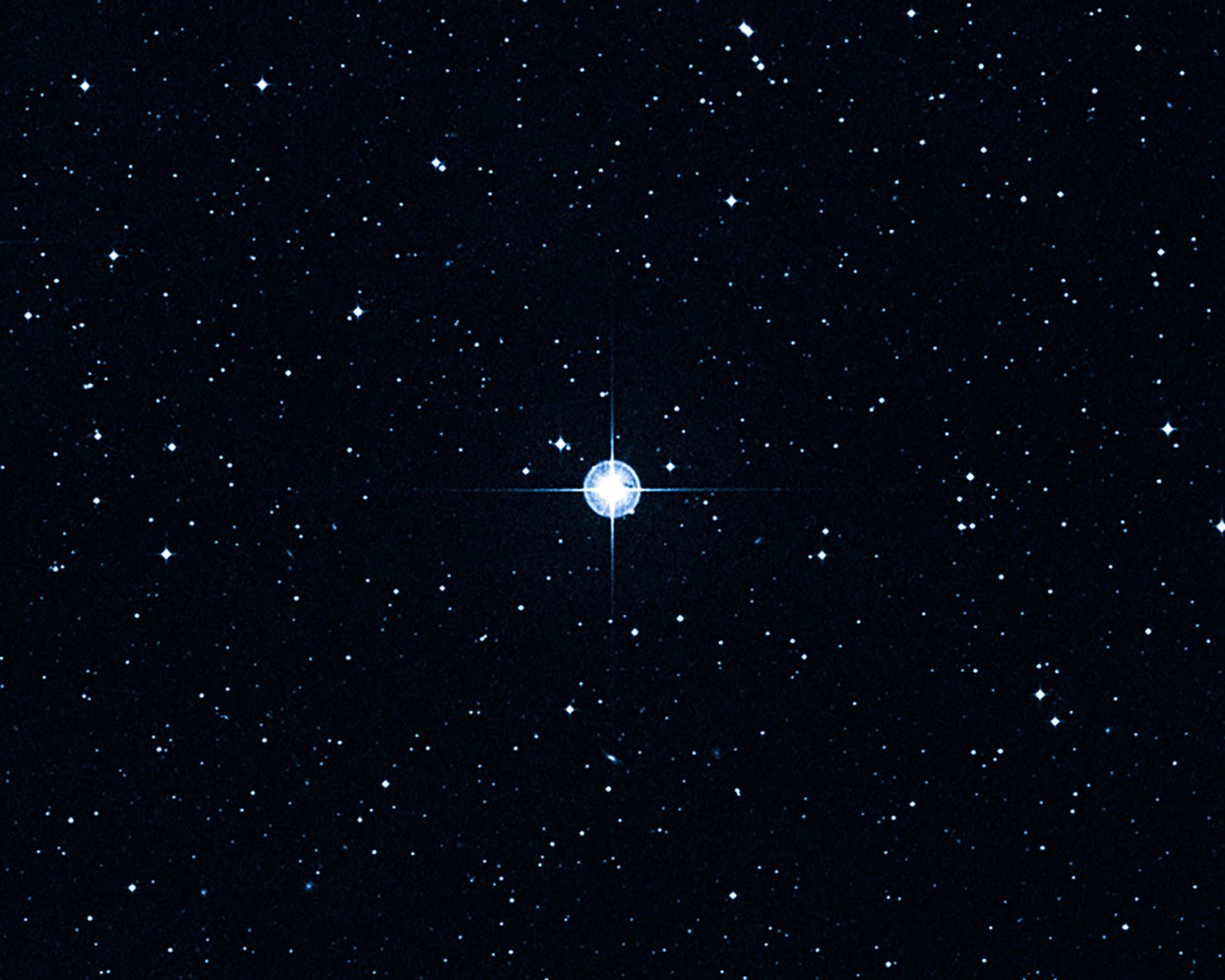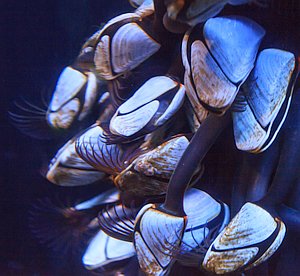Focus 44(1)
creation news and views
Babylonian mathematics find

A cuneiform tablet, thought to be around 3,700 years old, and designated Si.427 is now said to be the oldest example of applied Pythagorean geometry. The clay tablet from Babylonia was unearthed in central Iraq in the late 1800s, and displayed in the Istanbul Archaeological Museum, Turkey, for more than a century.
Daniel Mansfield, a mathematician from Australia’s University of New South Wales (UNSW), gained access to the tablet, and recognized its significance. Mansfield had published about a similar tablet, Plimpton 322, which he determined was the oldest known trigonometric table. It shows that “the Babylonians had an advanced knowledge of mathematics and [that] Pythagoras’ theorem was known a thousand years before Pythagoras.”
The tablet is now thought to be a surveyor’s plan of a field which uses trigonometry to work out the lengths and areas of the land. It may have been used in legal disputes, or to calculate the land’s crop yield. The UNSW report says that Si.427 “reveals that mathematics during this era was more sophisticated than previously assumed.”
These findings are consistent with the history in Genesis—humans were created intelligent from the beginning—rather than evolutionary ideas of human progress from primitive ancestors. Since Babylon was in the region civilization recommenced after Noah’s Flood, we would expect to see sophistication here from the very earliest times. (For more, see creation.com/oldest-geometry.)
- Daniel Mansfield uncovers world’s oldest known example of applied geometry; maths.unsw.edu.au, 5 Aug 2021.
- Malcolm, D., Plimpton 322: A sample of ancient mathematics, J. Creation 7(2):151–154, 1993; creation.com/plimpton322.
The complexity of a single brain neuron

The processing of information that must somehow take place in our brain obviously involves great complexity. This complexity has generally been seen as largely arising from the ways in which vast numbers of neurons (nerve cells) can connect to and interact with each other. It is increasingly being recognized that for many key types of brain nerve cells, the individual neurons themselves are “highly complicated I/O [input/output] information processing devices.”
Beniaguev et al. utilized advances in machine (computer) learning, namely deep artificial neural networks that mimic how our neurons communicate with each other, to mimic the I/O operations of a ‘biological’ neuron model. This included its elaborate architecture and other properties, as well as the “large number of excitatory and inhibitory inputs that bombard the neuron.”
As reported by Whitten, the study found that to represent the computational complexity of a single such neuron model required “about 1,000 artificial neurons for just one biological neuron.” Whitten mentioned computational neuroscientist Grace Lindsay as cautioning the study was “only comparing a model to a model.” It was currently impossible “to record the full input-output function of a real neuron”. The model of the neuron was likely not capturing everything. “In other words, real neurons might be even more complex.”
There are roughly 86 billion neurons in our brain, each interacting with others in sophisticated networks. And like all cells, neurons are a world of structural and biochemical complexity in and of themselves. It’s hard to argue with the oft-cited phrase that the human brain is the most complex organization of matter in the known universe. Yet it’s widely taught that it evolved, with no creative design, plan, or purpose.
- Whitten, A. How computationally complex is a single neuron? quantamagazine.org, 2 Sep 2021.
- Beniaguev, D. et al., Single cortical neurons as deep artificial neural networks, Neuron 109(17):2727–2739, 1 Sep 2021.
Microbe in evolutionary stasis for ‘175 million years’!

A research team examining the genome of the bacterium. Candidatus Desulforudis audaxviator (CDA) have claimed that it has remained virtually unchanged for more than 175 million years. This is from when the alleged supercontinent Pangea started to break up, isolating populations of the bacteria from each other. “They appear to be living fossils from those days” stated paper co-author Ramunas Stepanauskas.
150 of the microbes were collected from three different continents for examination. The team had believed that bacteria normally adapt to different environments very quickly. As such they expected to find clear differences in the genetics of the populations and were shocked when this was not the case. The team ruled out cross contamination, and as the microbes live deep underground the team also ruled out that they could have travelled long distances. This left them with two options, 1 – recent dispersal, or 2 – ancient dispersal and evolutionary stasis.
The team favoured option two. However, in doing so had to admit, “This discovery shows that we must be careful when making assumptions about the speed of evolution and how we interpret the tree of life.” Lead author Eric Becraft said, “It is possible that some organisms go into an evolutionary full-sprint, while others slow to a crawl, challenging the establishment of reliable molecular timelines.”
But this really is just a bad case of trying to have your cake and eat it, wanting evolution to always work through consistent information-adding mutations, except when it doesn’t. Option number one, a recent dispersal, makes much more sense with the bacteria ending up in their current locations due to the action of Noah’s Flood, some 4,500 years ago.
- Becraft, E.D. and 15 others, Evolutionary stasis of a deep subsurface microbial lineage, ISME J, 6 Apr 2021.
- Fuge, L. Living fossil discovered below Earth’s surface; cosmosmagazine.com, 12 Apr 2021.
Underwater avalanche builds and builds

In January 2020, a powerful underwater avalanche created a seafloor flow of sediment (called a turbidity current) off the west coast of Africa. The flow damaged telecommunications cables and continued for two days. It was the longest-running underwater avalanche yet recorded in action.
An undersea canyon at the mouth of the Congo River leads out into the Atlantic depths. Scientists had previously lined the submerged canyon with an array of sensors capable of detailed measurement of turbidity currents. For the first time, they were able to study the progress of a large flow of sediment.
Widespread underwater deposition occurred, as well as erosion of the seabed in some places. The flow travelled more than 1,100 km (700 miles) across the floor of the Atlantic Ocean, simultaneously eroding over a cubic kilometre of sediment. The flow continuously accelerated from 5.2 to 8 metres/second (12 to 18 mph) as it progressed, ending up in waters 4.7 km (3 miles) deep.
The scientists found that large sediment flows can ‘self-accelerate’ and build in power over exceptionally long distances across the ocean floor.
In the words of Professor Peter Talling, of Durham University: “This thing gradually got faster and faster. Because it erodes the seabed as it goes, it picks up sand and mud, which makes the flow denser and even quicker. So, it has this positive feedback where it can build and build and build.”
Most of the earth’s extensive sedimentary rock layers were laid down over vast distances, by much larger and more energetic turbidity currents. This latest study provides a tiny insight into how enormous underwater sediment flows during Noah’s Flood could build in speed and power as they progressed.
- Amos, J., Underwater avalanche continued for two days, bbc.com, 7 Jun 2021.
UFOs piloted by our descendants?
Michael Masters, a professor of biological anthropology at Montana Technological University, has proposed that UFOs are being piloted by us, rather than an alien species.

“We know that we’ve had a long evolutionary history on this planet. And we know our technology is going to be more advanced in the future. I think the simplest explanation, innately, is that it is us.” That is to say, our distant human descendants, who have somehow learned to time travel, and who are “returning from the future to study us in their own evolutionary past.”
Romans 1:21, “they became futile in their thinking”, surely comes to mind. And Masters is evidently unaware of the hair-raising accounts that show these alleged ‘visitors’ are not benign, but malevolent. See Gary Bates’ bestselling book and DVD, Alien Intrusion: UFOs and the Evolution Connection (alienintrusion.com).
- David, L., Are the aliens us? UFOs may be piloted by time-traveling humans, book argues, space.com, 20 Jan 2020.
Cult of the ‘ex-creationist’
It seems a new ‘strategy’ might be in play to try to counter the influence of the biblical (young-earth) creation movement.

This is exemplified by the recent publicity given to the writings of ‘ex-creationists’ (but who claim to not have abandoned Christianity or belief in God).
Premier Christianity published an 1800-word piece by University of Western Sydney astrophysicist Dr Luke Barnes entitled “Why I’m no longer a young earth creationist” (30 July 2021). To their credit, “The UK’s leading Christian magazine” contacted Creation Ministries International inviting us to contribute an article of similar length in response. Retired CMI-Canada speaker and physicist Dr Jim Mason eagerly obliged: “Why I’m finally a young earth creationist” (republished with permission, creation.com/finally-YEC).
The following month Eerdmans Publishing announced a new book Baby Dinosaurs on the Ark?, described as “A scientific look at creationism by a former creationist”, Janet Kellogg Ray. The publishers found plenty of high-profile names to endorse the book, e.g. John Walton (professor of Old Testament at Wheaton College) and Karl Giberson (author of Saving Darwin: How to Be a Christian and Believe in Evolution). Of course, this called for a rebuttal—CMI-USA biologist Joel Tay’s consummate refutation can be seen at creation.com/review-baby-dinosaurs-on-ark.
The massive ‘disconnect’ in all this is evident from Janet Kellogg Ray’s assertion that “Evolution theory says nothing about God or religion or any other world view, for that matter.” Then what does she and her like-minded ‘Christian evolutionists’ make of the Freedom From Religion Foundation’s paying for huge billboard advertisements proclaiming “Praise Darwin”? And the likes of Cambridge University evolutionist Peter Lawrence’s atheistic zeal: “In this vital mission to discredit the supernatural, nothing has proved more important than The Origin of Species.” (creation.com/vital-mission-atheists)
Dino skin shows no feathers
A dinosaur fossil with “incredibly well-preserved skin” was found in Patagonia in 1984. However, the fossil wasn’t properly studied at first. It has only recently been fully analyzed by scientists.
The dinosaur has been identified as a horned abelisaurid (Carnotaurus sastrei). The scientists found amazing detail of scales, wrinkles, and horny bumps covering nearly every part of the predator. A recent news article on the fossil find repeated the common assertion that many dinosaurs had been feathered. And yet, the writer then admitted that “not anywhere is there even a hint of a feather” on the abelisaurid fossil. She went on to state that large, meat-eating dinosaurs such as T. Rex and the horned abelisaurid “really did seem to have scaly, lizard-like skin.”
Many secularist scientists are keen to portray dinosaurs as having been feathered, as it lends support to the fanciful idea that birds evolved from dinosaurs.
That’s not to say that God couldn’t have created some dinosaurs with feathers. If that were so, it wouldn’t detract in any way from biblical truth. But despite many claims for feathered dinosaurs, the evidence is sketchy at best.

- Cassella, C., This fossilized skin sample of an iconic dinosaur has revealed jaw-dropping details, sciencealert.com, 14 Sep 2021.
“Weird” star too cold, and too old
An unusual white dwarf discovered relatively near the solar system “defies current explanation” as it is “colder than it should be”. Called DES J2147-4035, its relative coolness (only a few thousand degrees) suggests to evolutionists that it is about 10 billion years old. But that is many billions of years older than the “much younger stars” in that region of the galaxy, leaving them baffled.

This latest evolutionary conundrum comes on top of many years of argument between cosmologists about the age of the universe. A 2013 Hubble telescope measurement of another star, HD 140283, dubbed the ‘Methuselah Star’ as it is presumed to be the oldest in the universe, put its age at about 14.5 billion years old (with a supposed error range either side of 0.8 billion years). But that would mean it is older than the universe, presumed by many cosmologists to be “only” 13.77 billion years old (error range 0.04).
While cosmologists, astrophysicists and the like furiously debate the merits of what estimates to use in order to try to remove the problem of impossibly conflicting ages, it is the Maker’s eyewitness account that trumps any human ‘measurements’. The heavens do indeed “declare the glory of God” (Psalm 19:1), thwarting human attempts to naturalistically explain away His handiwork. The earth was created on Day 1 of Creation Week only about 6,000 years ago, with the sun, moon and stars created after that on Day 4.
- O’Callaghan, J., Weird white dwarf that is colder than it should be defies explanation, newscientist.com, 5 Oct 2021.
- Crookes, D., How can a star be older than the universe? Space mysteries: If the universe is 13.8 billion years old, how can a star be more than 14 billion years old?, space.com, 17 Oct 2019.
Celebrity scientists’ influence

A research survey in the UK has found that celebrity scientists, like Sir David Attenborough, Brian Cox, and the late Stephen Hawking, can increase public acceptance of evolution.
However, this pro-evolution influence was mostly confined to the “non-religious” public. The “religious audience” was largely resistant.
Furthermore, when the public celebrity was known to have negative views of religion, those with strong religious beliefs were actually moved to become less accepting of evolution. This was especially so in the case of Richard Dawkins (seen here with Ariane Sherine at the 2008 launch of the atheists’ bus ad campaign).
The researchers accordingly wrote: “We suggest that engaging certain religious audiences with the science of evolutionary biology may be more effective when their religious identities are not threatened.” This appears to be a ‘nod’ to the tactic of using professing theistic evolutionists to promote evolution to Christian audiences.
- Ellwood, B., Celebrity scientists tend to sway the public toward greater acceptance of evolution, but not when religious identity is threatened, psypost.org, 7 Oct 2021.
- Unsworth, A. and Voas, D., The Dawkins effect? Celebrity scientists, (non)religious publics and changed attitudes to evolution, Public Understanding of Science, 25 Feb 2021.
Underwater superglue copies barnacles and mussels
We previously noted the very strong underwater glue by which mussels stick to rocks (Mussel muscle, Creation 22(4):7, 2000). The mussel uses protein chains containing the special amino acid dihydroxyphenylalanine (DOPA), plus iron ions (Fe3⁺) which the mussel extracts from seawater. The ions cause the chains to cross-link, and the DOPA units bond very strongly to any surface.

Another creature that bonds very strongly to surfaces is the barnacle. It sticks to ship bottoms and other surfaces by making sticky nanofibres of sheeted proteins. These sheets can bond strongly with both the next protein sheet or with whatever nanofibres it’s sticking to. Both barnacles and mussels are very hard to pry off surfaces.
Engineers at Tufts University in Massachusetts have combined those two design concepts into a single glue. The barnacle-inspired component was silk fibroin from the cocoons of a silk moth. Silk is very similar to the barnacle’s nanofibres. The mussel-inspired component was polydopamine (PDA), with similar properties to the DOPA-rich proteins. Like mussels, Fe3⁺ ions were added. The result even looked like the natural glues under the microscope.
Lead researcher Fiorenzo Omenetto summarized: “The composite we created works not only better underwater than most adhesives available today, it achieves that strength with much smaller quantities of material.” Yet it is also non-toxic and doesn’t need any nasty volatile solvents.
- Presti, M.L. and 3 others, Bioinspired biomaterial composite for all‐water‐based high‐performance adhesives, Advanced Science, 3 Jun 2021.
- Scientists make powerful underwater glue inspired by barnacles and mussels, sciencedaily.com, 3 Jun 2021.


Readers’ comments
Comments are automatically closed 14 days after publication.